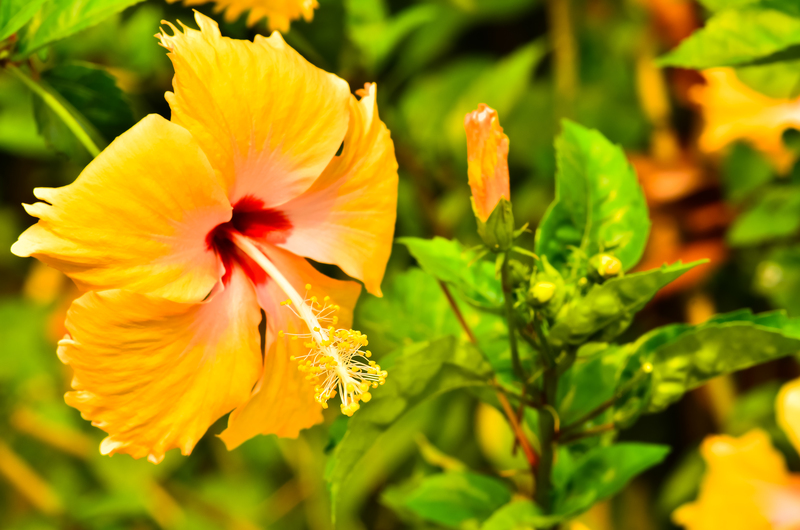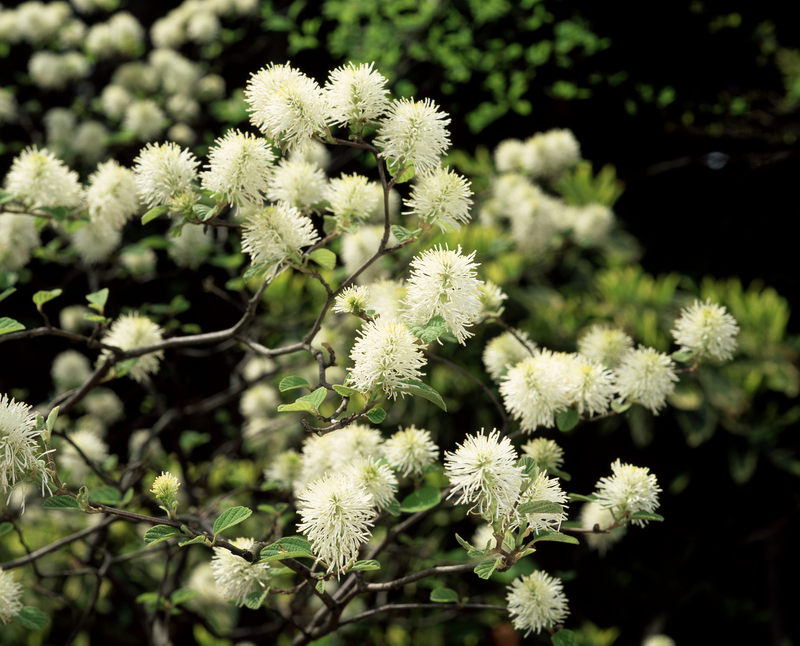Plants and Paws: Building a Pet-Friendly Garden
Posted on 06/06/2025
Plants and Paws: Building a Pet-Friendly Garden
Creating a beautiful pet-friendly garden is a delightful way to blend your love for greenery and your furry friends. Gardening with pets in mind ensures that your outdoor space is both safe and attractive, offering a harmonious place for both plants and paws. In this comprehensive guide, we'll explore how to design and maintain a landscape that's beautiful, functional, and perfectly suited to your beloved pets. Discover essential tips, plant suggestions, garden features, and safety advice to make your dog- and cat-friendly garden both welcoming and worry-free.
Why Choose a Pet-Friendly Garden?
Many traditional gardens can pose threats to our pets, from toxic plants to harmful mulches and sharp objects. By building a pet-safe garden, you prioritize the well-being of your four-legged companions, making outdoor time stress-free for them and for you. A well-designed animal-friendly garden also benefits you by reducing the risk of costly vet visits and granting peace of mind every time your pet steps outside.
- Safety: Avoid common hazards at home.
- Fun: Provide an engaging outdoor environment for pets.
- Well-being: Encourage exercise, exploration, and stimulation.
- Harmony: Allow plants and pets to coexist happily.

Planning Your Pet-Friendly Garden Design
Thoughtful garden planning is the key to ensuring your pet-friendly outdoor space meets the needs of both your pets and your landscape vision. Consider the following important factors:
Understanding Your Pet's Behavior
- Chewers: Puppies and some cat breeds like to nibble on plants. Choose non-toxic species and avoid harmful ones.
- Diggers: Dogs like terriers are prone to dig. Designate digging areas or use robust plantings in vulnerable zones.
- Explorers: Cats and some dogs love to investigate corners, climb, or jump. Install secure fencing or plant thick hedges as boundaries.
- Loungers: Shady spots offer comfortable resting places.
Zoning & Pathways
Plan garden zones for play, rest, and bathroom use. Clearly defined pathways can guide your pet, minimize trampling of plants, and keep paws off delicate flowerbeds.
- Paths: Use natural materials like gravel, mulch (avoid cocoa mulch), or stone.
- Barriers: Low fences or borders can block off delicate areas.
- Lawn: A patch of grass offers a pet-friendly soft surface for play.
- Pet rest areas: Provide cool, shaded zones with easy pet access.
Pet-Safe Hardscaping Ideas
Hardscaping adds functionality and durability. When creating a garden safe for dogs and cats, opt for:
- Non-toxic decking & pavers: Avoid treated lumber containing chemicals.
- Soft mulches: Use pea gravel, pine needles, or untreated wood chips instead of cocoa mulch (which is toxic to pets).
- Pet-proof fencing: Six-foot fencing keeps jumpers safe. For small pets, check for gaps.
Choosing Pet-Safe Plants: The Dos and Don'ts
The Importance of Non-Toxic Plants
Many common garden plants are hazardous to dogs, cats, and other animals if ingested. Always double-check plant safety with trusted resources like the ASPCA Toxic and Non-Toxic Plants List before planting in your pet-friendly backyard.
Top Pet-Friendly Plants
Elevate your garden design with these attractive, non-toxic options:
- Marigolds (Tagetes) - Bright, pest-repelling, and safe.
- Sunflowers (Helianthus) - Cheerful and edible.
- Snapdragons (Antirrhinum) - Colorful choice for borders.
- Basil, Thyme, Sage - Edible herbs loved by people and safe for pets.
- Creeping Rosemary (Rosmarinus prostratus) - Aromatic and hardy.
- Fuchsias - Beautiful flowering plant option.
- Camellias - Pretty and pet-safe.
- Magnolia bush or vine varieties
Plants to Avoid in Pet-Friendly Gardens
Be wary of popular (but toxic) choices when building a dog-safe garden or cat-safe landscape:
- Lilies - Extremely toxic to cats.
- Oleander
- Azalea & Rhododendron
- Daffodils & Tulips
- Sago Palm
- Foxglove
- Hydrangea
- Ivy
- Crocus
If you already have these in your yard, consider fencing them off or replacing with safer alternatives.
Functional and Fun Features for a Pet Garden
Water for Thirst and Play
Pets need fresh water, especially when spending time outdoors. Consider installing:
- Pet water fountains - Circulating water keeps it clean and cool.
- Kiddie pools or splash zones - Let pups cool off and have fun!
Pet Paths and Trails
Add meandering trails or designated pet runs using paw-friendly materials like grass, smooth flagstone, or bark chips. This helps pets burn off energy, protects main garden beds, and adds interest to your yard.
Shady Hideaways
- Create shade with trees and large shrubs, arbors, or even pet tents.
- For cats, plant tall ornamental grasses or install catios for climbing and lounging.
Digging Pits and Sandboxes
If your dog can't resist digging, provide a special dig zone:
- Set up a sandbox partially shaded by shrubs.
- Hide treats or toys for extra fun.
Safe Play Structures
- Pet tunnels, agility equipment, or simple logs for climbing provide exercise and enrichment.
- For cats, consider cat towers, scratching posts, or enclosed runs.
Maintaining Your Pet-Friendly Garden
Organic and Non-Toxic Gardening Practices
Use only pet-safe fertilizers and pest controls. Chemical products often contain ingredients that can harm pets, even in small amounts.
- Compost: Make your own with pet-safe materials (never add pet waste).
- Mulch: Choose natural options; avoid cocoa mulch.
- Natural pest control: Favor hand-picking pests, neem oil (in moderation), or introducing beneficial insects.
Fencing and Boundaries
Good fencing keeps your pets safe and discourages unwanted visitors like raccoons, rabbits, or other neighborhood pets.
- For dogs, use buried fencing to prevent digging under.
- For cats, consider catios (cat patios) or cat fencing with inward-angled tops.
Avoiding Hazards: What to Watch Out For
- Sharp stones, broken pots, or metal stakes -- can injure paws or noses.
- Ponds or pools -- add secure fencing and always supervise pets near water.
- Slug pellets or rat poison -- extremely toxic; never use in pet areas.
- Tools and equipment -- store away after use.
- Thorny plants -- use sparingly or keep out of reach.
Gardening with Supervision
Regularly supervise your pets in the garden, especially while exploring new plants or features. This helps discourage unwanted nibbling and teaches boundaries.
Seasonal Care for Pet-Friendly Gardens
Spring and Summer
- Watch for new plant shoots - pets are often curious about them.
- Water pets more frequently as temperatures rise.
- Protect pets from lawn chemicals after application.
Autumn and Winter
- Rake up leaves to prevent moldy piles that could tempt pets.
- Avoid de-icing salts on paths and paws.
- Provide sheltered spots or pet houses to protect against cold.
Benefits of a Pet-Friendly Garden
- Enrichment: A stimulating environment reduces pet boredom and stress.
- Exercise: Open space promotes physical health for both you and your pet.
- Bonding: Outdoor games and training sessions enhance your relationship.
- Sustainability: Using safe, organic gardening methods is better for the environment, you, and your animal companions.
- Home Value: A thoughtfully designed pet garden can add to your home's appeal.

FAQs on Building a Pet-Friendly Garden
-
Can I have a beautiful garden with dogs or cats?
Absolutely! With the right plant choices, thoughtful design, and good boundaries, you can have a lush, inviting landscape that's safe for your furry friends. -
Are all mulch types safe for pets?
Avoid cocoa mulch (toxic to dogs), and opt for untreated wood chips, straw, or bark. -
What if my pet eats plants?
Choose only pet-safe plants and always monitor your pet's garden habits. Contact your vet immediately if you suspect poisoning. -
How do I keep pets from destroying garden beds?
Use low fencing or barriers around delicate areas; provide alternate digging or play zones. -
Can I create a pet garden in a small space?
Yes! Even small patios or balconies can be made pet-friendly with potted safe plants, vertical gardens, and shaded resting spots.
Conclusion: Your Pet-Friendly Garden Awaits
Building a garden where both plants and paws thrive together is a rewarding project that enhances the lives of all household members--two- and four-legged alike. By selecting pet-safe plants, incorporating fun features, and practicing mindful maintenance, you ensure your outdoor space is both beautiful and safe for pets. Start planning your unique pet-friendly landscape today, and enjoy a flourishing, harmonious garden for years to come.
With a pet-friendly garden, you're not just cultivating plants--you're nurturing a haven for your best companions. Happy gardening!

